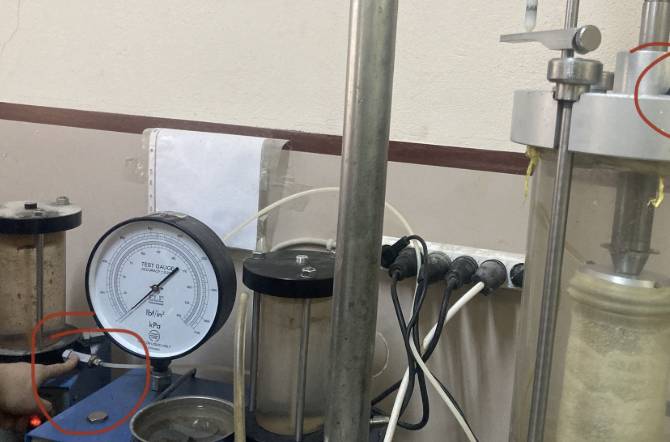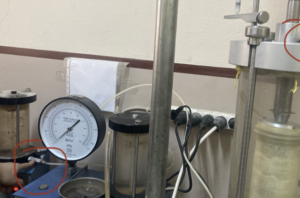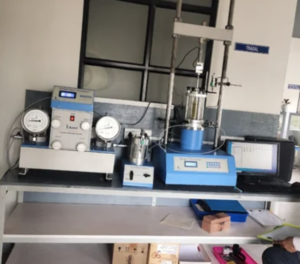Soil Triaxial Testing Explained by Experience: Accuracy, Pitfalls, and Best Practices
Triaxial testing isn’t mystical—it’s meticulous. When specimens are honest, saturation is proven, rates are intentional, and QA is relentless, the plots get quiet and the parameters stand up in design reviews. Here’s the playbook I wish someone had handed me on day one.
Get the Basics Right: From Specimen to Cell
Accuracy starts before the cell lid closes. Most “mystery scatter” is born at the bench.
Specimen preparation1 (do this the same way every time)
- Targets first: set dry density (ρ_d) or void ratio (e₀) and water content (w%).
- Mix & rest (fines): blend water thoroughly, then seal 12–24 h to equilibrate suction.
- Compaction2: build in 3–7 equal lifts (±5% thickness). Scarify between lifts for clays; avoid segregation for sands.
- Geometry: H/D = 2.0 ± 0.1; end faces flat/parallel (< 0.05 mm straightedge gap).
- Membrane fit: inner diameter 1–3% undersized vs specimen; deburr cap edges; use fresh O-rings.
- Leak pre-check: mount in cell; hold 10–20 kPa for 2–5 min → Δp ≈ 0 before you proceed.
60-second acceptance (print and tape to the frame)
| Check | Target | Pass Cue |
|---|---|---|
| ρ_d / e₀ | Plan ±1–2% | Mass/volume agree |
| Lift uniformity | ±5% | Even marks/heights |
| Ends | <0.05 mm gap | Flat under straightedge |
| Membrane | 1–3% undersized | Smooth, no folds |
| Leak hold | Δp ≈ 0 | Flat pressure trace |
Common pitfalls → fast fixes
- Too-stiff early curve → thick/loose membrane or tilted ends → thinner/snug sleeve; re-trim; apply seating pressure.
- Scatter between “identical” specimens → inconsistent lifts/moisture → standardize energy, cover soil, log room temp.
- Side-wall bypass (k-tests) → loose sleeve → choose undersized membrane; smooth specimen surface.
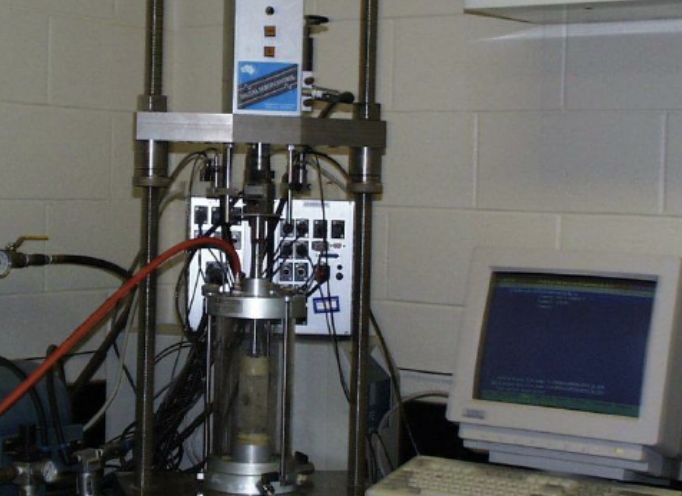
Saturation and Consolidation Without Guesswork
“Almost saturated” is a polite way to say “biased.” Prove it or don’t use it.
Saturation sequence (CU/CD)
- CO₂ flush porous stones & lines → de-aired water fill.
- Step back pressure in 25–100 kPa increments while maintaining σ′ ≈ 2–5 kPa (adjust cell pressure).
- Pause each step until volume drift ~ 0.
- Run two B-checks with a crisp +Δσ₃ pulse (≈ 20 kPa). Values should agree.
| B | Meaning | Action |
|---|---|---|
| ≥ 0.98 | Fully saturated | Proceed |
| 0.95–0.98 | Acceptable with note | Proceed; watch Δu |
| 0.90–0.95 | Air in lines/stone | Extend holds; back-flush stones; replace O-rings |
| < 0.90 | Not saturated | Find leak/air; restart steps |
- CU: consolidate to target σ′₃ with drainage open; estimate t₉₀ for rate planning.
- CD: verify Δu ≈ 0 at holds; stair-step volumetrics = drainage restriction or sampling too slow.
Pitfalls
- Rushing the last 50–100 kPa of back pressure (B stalls at 0.95).
- Old porous stones (swap them sooner than you think).
- Air pockets from sloppy de-airing (back-flush until bored).
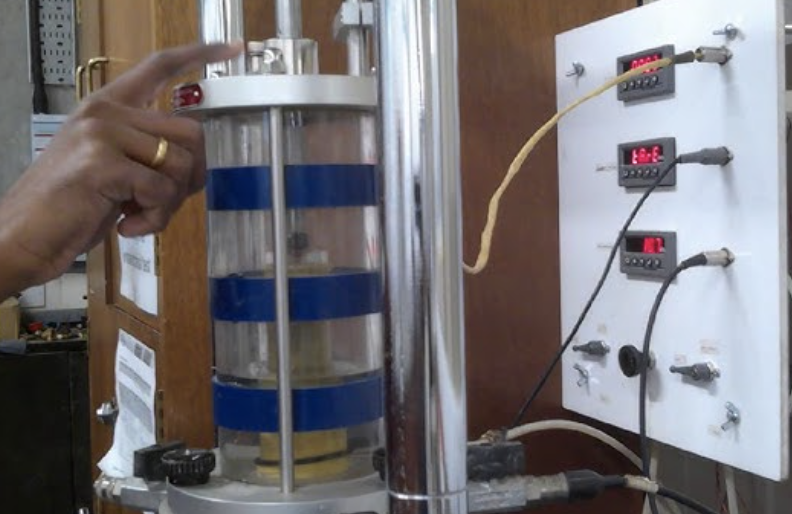
Shear Stage Discipline: Rates, Data, and Fail-Safes
Rate is how you enforce drainage5. Set it intentionally; then don’t touch it.
Choose rate by behavior, not habit
- CU (undrained): fast enough for volume ~ constant; Δu should be smooth and responsive.
- CD (drained): slow enough for Δu ≈ 0 and smooth volumetric strain (no stair-steps).
A practical way to set it
- From consolidation, note t₉₀.
- Start with a rate so that 0.5–1% axial strain takes ≲ 5% t₉₀ (CU) or ≳ 10–20% t₉₀ (CD).
- Watch the first 1–2% strain: if Δu misbehaves (CU) or refuses to stay ≈0 (CD), adjust once—then lock it.
Controller hygiene
- Enable ramp limits on pressure steps; tune PID6 to avoid overshoot.
- Log setpoint vs achieved for cell and back pressure; overlays should be tight.
Live plots that actually catch problems
- q–εₐ: early “steel-bar” stiffness → membrane/area correction issue.
- Δu–εₐ (CU): spikes = overshoot or micro-leak; flatline = unplanned drainage.
- v-change (CD): stair-steps = drainage restriction or logging too slow.
Fail-safes
- Weekly E-stop test; strain-relief on all tubing/cables; labeled valves (Sharpie beats heroics).
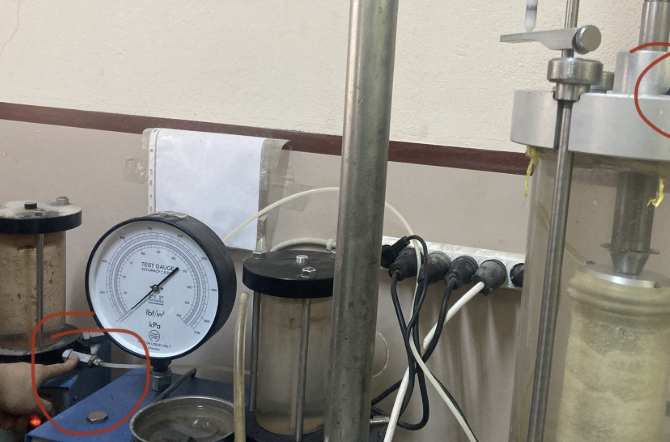
Quality Control, Documentation, and Traceability
Trustworthy numbers come from small, boring habits—every time.
Daily QA (5–8 minutes)
- Warm-up electronics 5–10 min.
- Zero load, displacement, cell/back pressure in test posture.
- Quick leak hold already passed at setup.
- Log room/cell temperature (target band ±1 °C).
Weekly / per batch
- Multi-point load cell check (0/25/50/75/100% FS).
- Verify pressure transducers7 against a reference.
- Back-flush porous stones; replace suspect O-rings.
Analysis workflow (repeatable and defendable)
- Failure rule (one rule): peak q or fixed strain (e.g., 15%) across all specimens.
- Area correction:
[
A \approx \frac{A_0}{1-\varepsilon_a}
\quad\text{or}\quad
A \approx A_0 \frac{1-\varepsilon_v}{1-\varepsilon_a}\ \text{if }\varepsilon_v\text{ measured}
] - Effective stresses (CU/CD): (\sigma'_i = \sigma_i – u_f). Then
(q = \sigma'_1 – \sigma'_3), (p' = (\sigma'_1 + \sigma'_3)/2). - Fit Mohr–Coulomb8 in p′–q: (q = M p' + k). Recover
(\sin\varphi' = \frac{3M}{6+M}),
(c' = \frac{k(3-\sin\varphi')}{6\cos\varphi'}). - Outlier policy: if one point moves the line beyond your acceptance band, check B, leaks, rate, area before keeping or discarding (document either way).
Symptom → likely cause → fix
| Symptom | Likely Cause | Practical Fix |
|---|---|---|
| B stuck at 0.92–0.94 | Air in lines/stone | Back-flush; new O-rings; extend holds |
| Δu spikes at constant rate | Controller overshoot | Add ramp limits; tune PID; slow slightly |
| “Too-stiff” early q–εₐ | Thick/loose membrane; wrong A(ε) | Snug/thinner sleeve; verify area correction |
| CD volume stair-steps | Drain restriction/logging | Clear lines; increase sampling rate |
| Scatter across “identicals” | Prep variation; rate drift | Standardize lifts/ends; log setpoint≍achieved |
Minimal metadata that saves projects (put this in your CSV header)
Final Takeaway
Triaxial success comes from habits, not heroics: prepare uniform specimens, prove saturation (B-value or bust), set shear rate with intent, and run quick QA every time. Do that, and your curves quiet down, your parameters get trustworthy, and your retests get rare.
-
Understanding specimen preparation is crucial for accurate results in laboratory testing, ensuring reliability and consistency. ↩
-
Exploring compaction techniques can enhance your knowledge of soil behavior, leading to better testing outcomes and project success. ↩
-
Understanding B-value triage is crucial for effective soil consolidation, ensuring accurate results and preventing errors. ↩
-
Exploring consolidation discipline helps in mastering soil behavior under pressure, essential for successful engineering projects. ↩
-
Understanding drainage practices is crucial for effective engineering solutions and avoiding costly mistakes. ↩
-
Exploring PID tuning can enhance your control systems, ensuring precision and efficiency in various applications. ↩
-
Understanding pressure transducers is crucial for accurate measurements in various applications. Explore this link to enhance your knowledge. ↩
-
The Mohr–Coulomb criterion is fundamental in geotechnical engineering. Discover its principles and applications to deepen your expertise. ↩

